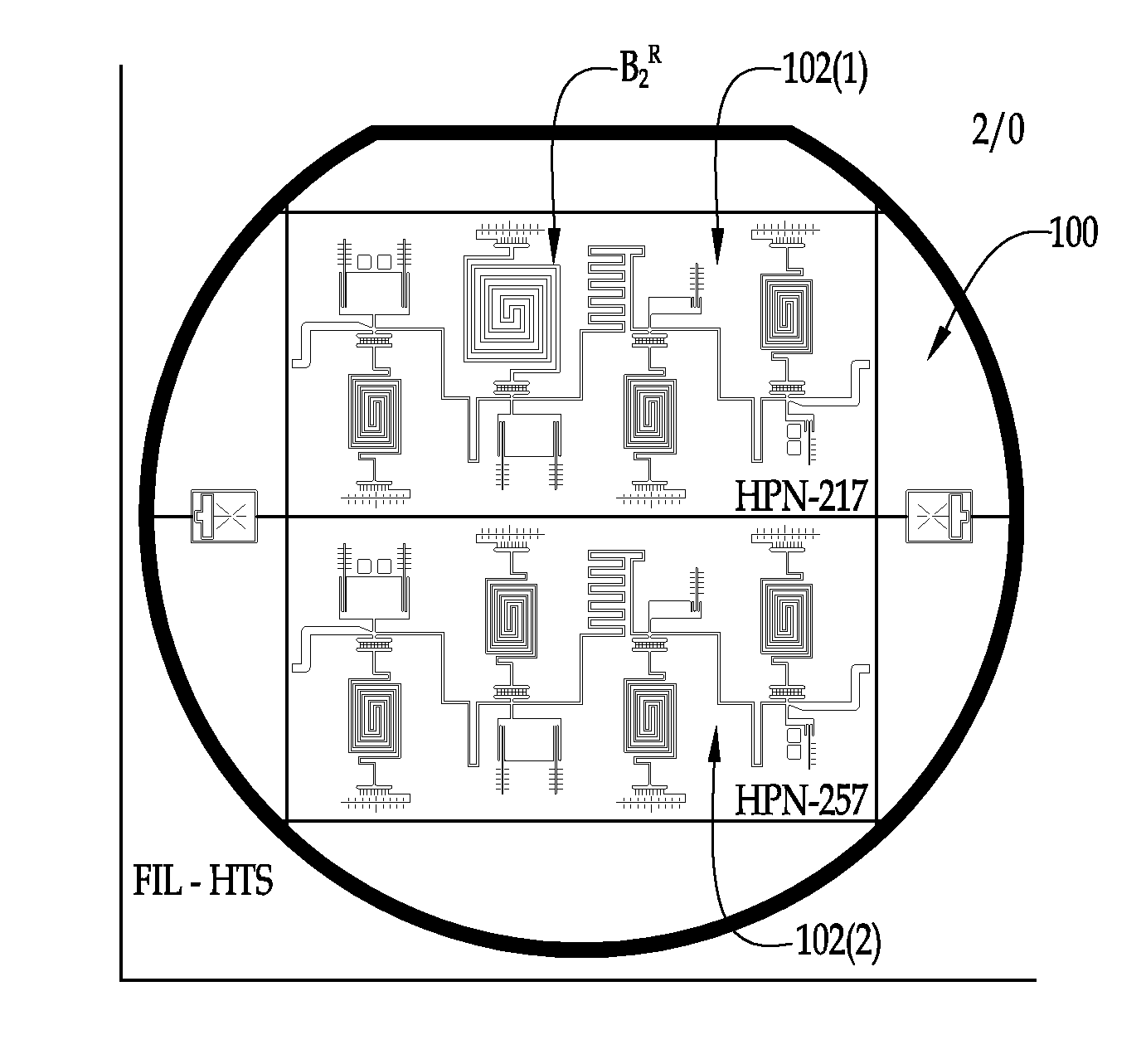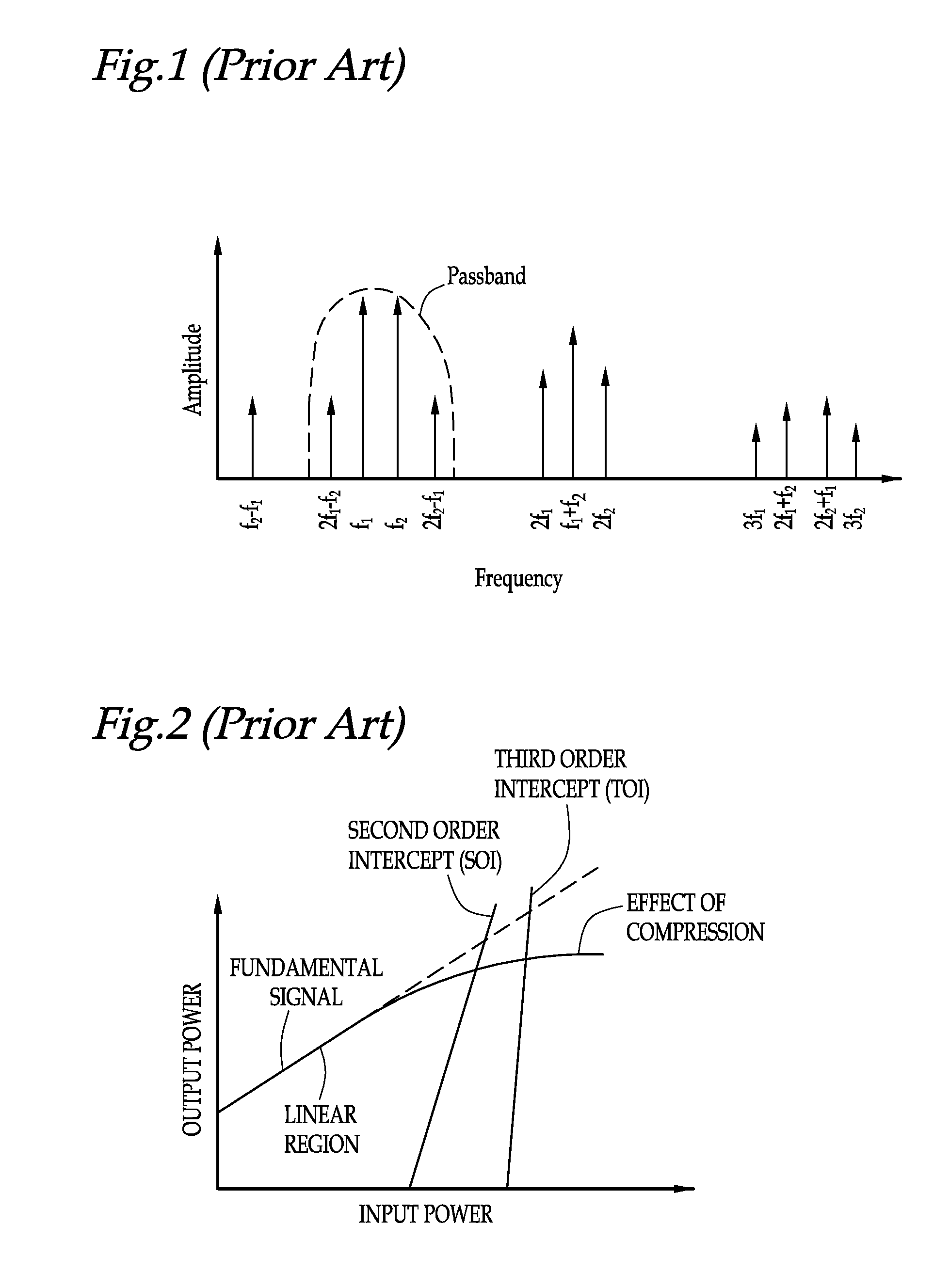Electrical filters with improved intermodulation distortion
a technology of intermodulation distortion and electric filters, applied in waveguides, instruments, computing, etc., can solve the problems of affecting the size and cost of resonators for a given, corresponding compromise in filter steepness or selectivity, and conductors with inherent lossiness
- Summary
- Abstract
- Description
- Claims
- Application Information
AI Technical Summary
Benefits of technology
Problems solved by technology
Method used
Image
Examples
Embodiment Construction
[0043]Referring to FIG. 3, one embodiment of a radio frequency (RF) communications system 200 constructed in accordance with the present inventions will now be described. The communications system 200 may be used in, for example, a base station. The communications system 200 generally comprises a front-end receiver system 202, a transmit system 204, and an antenna 206 shared by the receiver and transmit systems 202, 204.
[0044]The receiver system 202 comprises a filter network 208 for filtering RF signals 210 received by the antenna 206, and a receiver 212 for receiving the filtered RF signals 210 from the filter network 208. The filter network 208 is used to selectively pass the received RF signals 210 within a designated passband to the receiver 212, while filtering out interfering signals (which typically include RF signals transmitted by other communications systems and co-located transmission signals generated by the transmit system 204) located outside the operating frequency o...
PUM
 Login to View More
Login to View More Abstract
Description
Claims
Application Information
 Login to View More
Login to View More - R&D
- Intellectual Property
- Life Sciences
- Materials
- Tech Scout
- Unparalleled Data Quality
- Higher Quality Content
- 60% Fewer Hallucinations
Browse by: Latest US Patents, China's latest patents, Technical Efficacy Thesaurus, Application Domain, Technology Topic, Popular Technical Reports.
© 2025 PatSnap. All rights reserved.Legal|Privacy policy|Modern Slavery Act Transparency Statement|Sitemap|About US| Contact US: help@patsnap.com



